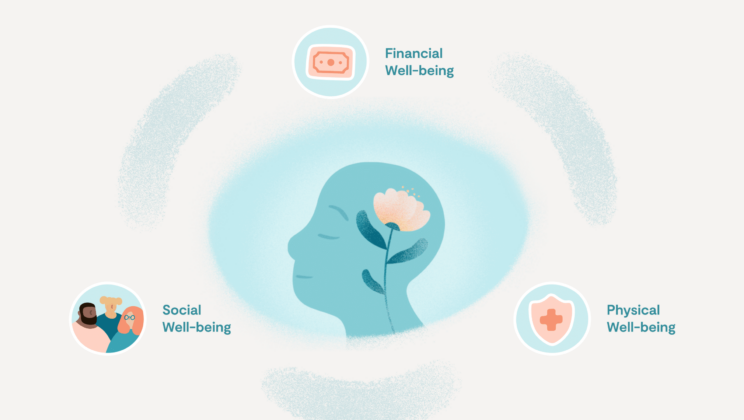2024 Mental Health Trends in the Workforce
December 12, 2023
In the past several years, awareness and support for mental health benefits in the workplace have been growing. In our 2024 mental health trends survey, 94% of respondents say that offering mental health benefits is “very important” to prospective employees. This number is nearly triple the rate of benefits leaders who said this in our 2023 mental health trends survey.
Meanwhile, 84% say creating a work culture that prioritizes mental health has risen in importance for their company over the past year. By providing the right mental health benefits for their employees’ needs, companies aim to improve overall well-being, while helping employees be more engaged and productive.
How will employers deliver the right mental health services to support their employees? We surveyed 250 benefits leaders across the United States to gain insights into their organizations’ approach. Based on our findings, these are our top predictions on workforce mental health trends in 2024. [Read the full report.]
Top mental health trends for 2024
Companies will focus on the full spectrum of mental health needs
More benefits leaders say employees’ mental health has declined over the last year
More employers will design the work environment with better mental health in mind
of benefits leaders believe their company should provide mental health-friendly work conditions
Companies will invest in mental health support for underrepresented populations
More benefits leaders report that achieving DEIB goals is a top benefit-related challenge
1. Employers will focus on the spectrum of mental health needs
Employees who receive appropriate mental health support are more productive and engage in a more meaningful way at work. But not everyone is getting the support they need: More than 1 in 3 (34%) benefits leaders reported a decline in their employees’ mental health in the last year, up from 21% in 2022. Common mental health challenges benefits leaders observed in 2023 included stress, work-related anxiety, and substance use disorders. Effectively addressing growing employee mental health issues is one way organizations may lower health care and disability costs in 2024.
Because each employee has unique mental health challenges, companies are moving from a one-size-fits-all approach to one that helps people find care for their specific needs. That starts with more awareness and tackling stigma, especially at the executive level. Whether related to milder issues or acute disorders, by investing in matching a diverse workforce with personalized care, employers will reap the benefits of a healthier workforce.
“It’s important to work with a mental health care provider who specializes in the issue you’re struggling with, who will use proven treatments for your specific challenges. That has been shown time and again to be more effective. Part of why Lyra’s clinical outcomes are so outstanding is the technology behind our provider matching and our ability to pair the individual to the right care the first time.”
2. More employers will design the work environment with better mental health in mind
Employees are increasingly prioritizing their own mental health, even if it means leaving a company or turning down a job offer. In our survey, 82% of benefits leaders believe it’s their company’s responsibility to create work conditions that prevent employees from developing work-related mental health problems.
To boost hiring and retention, companies are using innovative work design practices to create healthier work environments and better working conditions. The goal is to reduce any negative effects of the workplace on their employees’ mental health. For example, 68% of benefits leaders report providing resources to support employee well-being at work, such as workshops and peer champion programs. Moreover, companies are conducting regular risk assessments to identify psychosocial workplace hazards that could lead to negative mental health impacts. Encouraging regular conversations between managers and their direct reports is another way of addressing these hazards.
“The most common psychosocial risk factors we see today include low job control, work overload, and increasingly, a sense of isolation for remote and hybrid workers.”
3. Companies will invest in mental health support for underrepresented populations
With more awareness of diversity, equity, inclusion, and belonging (DEIB), many organizations are prioritizing mental health care that specifically meets the needs of underrepresented populations, such as BIPOC and LGBTQIA+ employees.
In our mental health trends survey, benefits leaders ranked “implementing or extending benefits programs to support employee subpopulations” as their top priority for 2024. Additionally, 29% of benefits leaders named “achieving company DEIB goals” among their top three benefits-related challenges for 2024, up from 21% in the prior year’s survey.
When designing mental health programs for 2024, one way we expect to see HR and benefits leaders address the needs of underrepresented populations is via access to care providers who share some aspects of employees’ identities. Benefits leaders are also relying on employee resource groups (ERGs) more often when planning benefits to understand trending mental health topics. ERGs may evaluate and suggest changes to mental health benefits options based on peer feedback; in this way, ERGs can help ensure that the benefits offered meet the needs of all employees.
In 2024, we predict organizations will continue to use data reporting as the cornerstone of designing mental health benefits. By using data, benefits leaders have a more accurate picture of the mental health needs of their employees. For example, data reports can show which subpopulations are or aren’t engaging in care. Leaders can then proactively communicate with those workers to learn more about their needs.
"We are seeing more companies that want to keep the conversation going with gatherings, small group discussions, educational programs, and mentorship programs for people who identify with certain social identity groups."
Mental health benefits are constantly evolving as workers’ needs change. The latest treatments and best practices continue to evolve, too. In the year ahead, companies that consistently stay on top of mental health trends will be able to create effective benefits programs that help employees feel better and stay engaged in their work—a win-win for individuals and entire organizations.
Check out our webinar to learn more 2024 trends
Get more predictions on workforce mental health trends for 2024
Author
The Lyra Team
The Lyra Team is made up of clinicians, writers, and experts who are passionate about mental health and workplace well-being. With backgrounds in clinical psychology, journalism, content strategy, and product marketing, we create research-backed content to help individuals and organizations improve workforce mental health.
Explore additional blogs

Mental health tips
Caregiver Burnout: How to Find Peace in the Chaos

Workforce mental health trends
Supporting the Whole Person With a Cohesive Benefits Strategy

Workforce mental health trends

